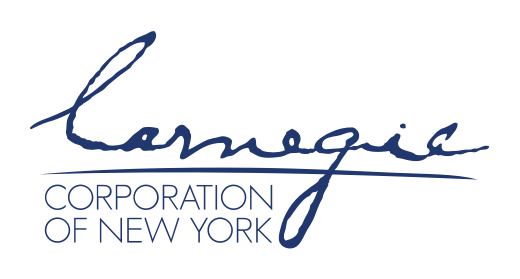Although Russian young adults primarily turn to social media for news, a majority do not trust information reported by most media outlets.
Under the leadership of Russian President Vladimir Putin, there has been a significant consolidation of state control over mainstream media outlets and restriction of independent journalism. However, digital media platforms, like social media apps and blogs, have emerged in recent years as vibrant spaces for the dissemination of information and public discourse. While the virtual sphere is also subject to restrictions and censorship, myriad Russian voices and perspectives have managed to find audiences through digital channels.
A joint survey by the Chicago Council on Global Affairs and the Levada Analytical Center, fielded February 6–26, 2024, finds the majority of Russian young adults do not trust information reported by any media outlet, whether state-controlled—like television news broadcasts, newspapers, and the radio—or less-regulated digital media platforms—like social media, blogs, and other websites. The data further reveal differences in public sentiments and foreign policy preferences between young adults who do trust information reported by traditional, state-controlled media outlets and those who trust information reported on digital media platforms.
Key Findings
- According to a February 2024 Levada Center survey, social media are the primary source of domestic and international news for young Russians (54%), whereas older Russians (75%) and the overall population (63%) most often turn to television news broadcasts for their information.
- Seven in 10 Russian young adults say they do not trust any media outlet to publish unbiased, factual information (72% on average, across various media outlets).
- Young Russians are just as likely to trust the information they receive from social media, a digital media platform (24%), as they are to trust newspapers, a state-controlled media outlet (25%).
- Russian young adults who trust the information reported by traditional, state-controlled media outlets are more likely to have nationalist sentiments, similar political views as their parents’, and optimism about Russia’s political future. They are also more likely to support Russia’s spending on the war in Ukraine and worry about external threats than those who trust the information reported on digital media platforms.
Social Media Are Primary Sources of Information for Youth
According to a survey conducted by the Levada Center in February 2024 of the overall Russian population, the majority of Russian citizens tune in to television news broadcasts for information about their country and the world (63%). The share of Russians whose primary source of information is television declined between 2013 and 2021 but began to increase after Russia launched its special military operation in Ukraine. This shift in media consumption could be associated with the state’s monopolization of information on the operation and marginalization of media outlets attempting to provide key updates and alternative perspectives on the conflict. With the exception of cable entertainment channels, all privately owned television channels were banned from broadcasting in Russia, and many independent media organizations, as well as journalists themselves, were designated as “foreign agents” and forced to shut down their operations. As a result, hundreds of independent journalists have either fled the country or been arrested since the military operation in Ukraine began, a move that has only strengthened the state’s monopoly over the press.
While most Russians cite television as their primary source of news and information about the world, there are stark differences across age groups. Unlike older Russians, Russians ages 18 to 34 most often turn to digital media platforms, like social media platforms (61%), Telegram channels (37%), and other websites (36%), rather than to traditional, state-controlled media outlets, like television (34%), radio (5%), or newspapers (2%), for news and information (see Appendix Table 1).
Whereas older generations of Russians primarily receive news and information from state-controlled television broadcasts, young adults are unique in that social media platforms, like Instagram, Facebook, and X, formerly known as Twitter, are their primary sources of news about their country and the world. Telegram channels have also grown in popularity among this age group and especially after other social media platforms were blocked by the government in response to the special military operation in Ukraine. These channels not only provide diverse and alternative sources of information and spaces for public discourse, but also offer insight from nationalistic correspondents on the frontlines of the military operation.
Russian Young Adults Are Skeptical of All Media Outlets, Including Social Media
Data from the Council-Levada Center survey show that young Russians are skeptical of the information they receive from all media outlets, regardless of whether they are state-controlled media outlets (television, newspapers, and radio) or digital media platforms (social media, blogs, and other websites) that are less censored and restricted by the state.
Seven in 10 Russian young adults say they do not trust that any media outlet publishes unbiased information and reports only the facts on a situation (71.2% on average, across various media outlets). Although social media is the primary source of information among the youth population, they are just as likely to trust the information they receive from social media, a digital media platform (24%), as they are to trust newspapers, a state-controlled media outlet (25%). Only about two in 10 Russian young adults say they trust the information received from television news broadcasts (21%), blogs and other websites (20%), and the radio (17%).
Differences in Political Attitudes Based on Trusted Media Sources
While the data show marginal differences in the degree of trust young Russians have in both traditional, state-controlled media outlets and digital media platforms, data analysis reveals differences in political sentiment and support for Russian foreign policies across the minority of Russians who do trust those media outlets. It finds an association between trust in traditional media outlets and a heightened sense of nationalism, optimism for the future, and support for current foreign policies, and a weaker preference for democracy as a system of government.
When thinking about Russia’s political situation in 10 years’ time, young adults who trust traditional media outlets are more likely to be optimistic than those who trust digital media platforms (38% traditional media vs. 28% digital). They also have a greater sense of nationalism and traditional political views, as they are more likely to say that Russians are a great people of particular significance to world history (66% vs. 53%) and that their political views align with those of their parents (72% vs. 60%). When it comes to democracy, Russian young adults who trust traditional media outlets are far less likely to say that democracy is preferable to any other kind of government than those who trust the information they receive from digital media platforms (44% vs. 55%).
The data also show that trust in traditional, state-controlled media outlets can impact foreign policy attitudes among young Russians, particularly in the context of Russia’s special military operation in Ukraine. Russian young adults who trust traditional media outlets are more likely to think Russia is spending an appropriate amount of money on its war in Ukraine (70%). By contrast, only a slim majority of those who trust digital media platforms think the same (54%) , and they are more than twice as likely to say that Russia is spending too much on the war than those more trusting of traditional media outlets (33% vs. 15%, see Appendix Table 2). At the same time, however, majorities of both groups say Russia needs to improve its relations with the United States and other Western countries, though those who trust digital media platforms say so to a greater degree (68% vs. 64%).
Minority of Russian Youth Consume Content from Oppositional Leaders
When presented with a list of opposition leaders who are popular across various digital media platforms and asked which, if any, they regularly follow, 17 percent of Russian young adults put Yuri Dud at the top of the list. Dud rose to fame by posting interview-style discussions about culture, media, and politics on YouTube. Though viewed less than Dud’s, the channels of Ksenia Sobchak and Redakciya (13% and 12%, respectively) are also somewhat popular among Russian youth, as their content is geared toward more-neutral and less-critical audiences.
Roughly one in 10 Russian young adults tune in to Ekaterina Schulmann (11%), a political scientist and publicist; Popularnaya Politika, a former member of Alexey Navalny’s team (11%); and Dmitriy Gordon (10%), a Ukrainian journalist and interviewer. Less than 10 percent of young Russians consume the content of other important players in the field: Maxim Katz, a Russian politician and blogger on YouTube (6%), and Mikhail Khodorkovsky, former chief of Yukos, a Russian oil company, and now founder of the Russian antiwar committee.
Overall, the majority of Russian young adults say they do not consume content from the aforementioned bloggers and politicians. However, young Russians who trust information reported on digital media platforms are also more likely to say they consume politicized content online than those trusting of state-controlled media outlets—a fact that may explain their differing political attitudes.
Conclusion
In lieu of traditional media outlets, digital media platforms have, in recent years, emerged as alternative avenues for information sharing and public discourse for young Russians. While studies show that social media are the most popular sources of news and information for young adults, the Council-Levada Center survey finds that this cohort does not trust the validity of information reported by any media outlet, whether it be a traditional outlet or digital platform. Moreover, there are differences in political attitudes across the small share of Russians who trust information from either traditional media outlets or digital media platforms.
Table 1. Primary Source of Information Across Age Groups
Where do you most often learn about news in the country and the world? (%)
| 18-34 | 35-44 | 45-54 | 55-64 | 65+ | |
|---|---|---|---|---|---|
| TV | 34 | 57 | 72 | 75 | 91 |
| Radio | 5 | 8 | 13 | 21 | 9 |
| Newspapers | 2 | 3 | 7 | 8 | 16 |
| Friends and relatives | 20 | 13 | 13 | 21 | 9 |
| Websites | 36 | 39 | 29 | 26 | 15 |
| Social Media | 61 | 41 | 39 | 30 | 16 |
| Telegram Channels | 37 | 23 | 23 | 16 | 6 |
| YouTube Channels | 18 | 14 | 15 | 15 | 6 |
| Other | 0 | 0 | 1 | 0 | 0 |
| Not interested | 1 | 1 | 0 | 1 | 1 |
| Difficult to answer | 0 | 0 | 0 | 0 | 0 |
Table 2. Spending on Ukraine War by Trust in Media Outlets
Do you think Russia is spending too much, too little, or just as it should on the conflict in Ukraine? (%)
| Trust in digital media platforms (social Media, blogs, and other websites) | Trust in Traditional Media outlets (Teleivision News Broadcasts, Newspapers, and Radio) | |
|---|---|---|
| Too much | 33 | 15 |
| Too little | 10 | 10 |
| Just as it should | 54 | 70 |
This Chicago Council on Global Affairs-Levada Center survey was conducted February 6–26, 2024, among a weighted national sample of 1,003 adults 18 to 34 living in Russia. This sample was obtained from a randomly generated sample of mobile phone numbers, which were used to contact respondents and survey them via a computer-assisted telephone interviewing method. The margin of error for the full sample is ± 3.1 percentage points at a 95 percent confidence interval.
The eligibility of respondents was verified based on their answers to questions about age and their region of residence. For the study, respondents residing within the territory of Russia between ages 18 and 34 were considered eligible to be surveyed.
This work is made possible by the generous support of the Carnegie Corporation of New York.








Related Content
 Public Opinion
Public Opinion
Although a plurality of young Russians say they are anxious about Russia’s political future, few vote or participate politically.
 Public Opinion
Public Opinion
Before the Crocus City Hall attack, a plurality of Russian young adults said Russia’s top foreign policy priority should be bolstering the country’s physical defenses.
 Public Opinion
Public Opinion
Russians report limited impact of Western-imposed sanctions and continued support for the war in Ukraine.
 Public Opinion
Public Opinion
The Russian public is concerned about NATO expansion but does not think an attack from the West is imminent.

